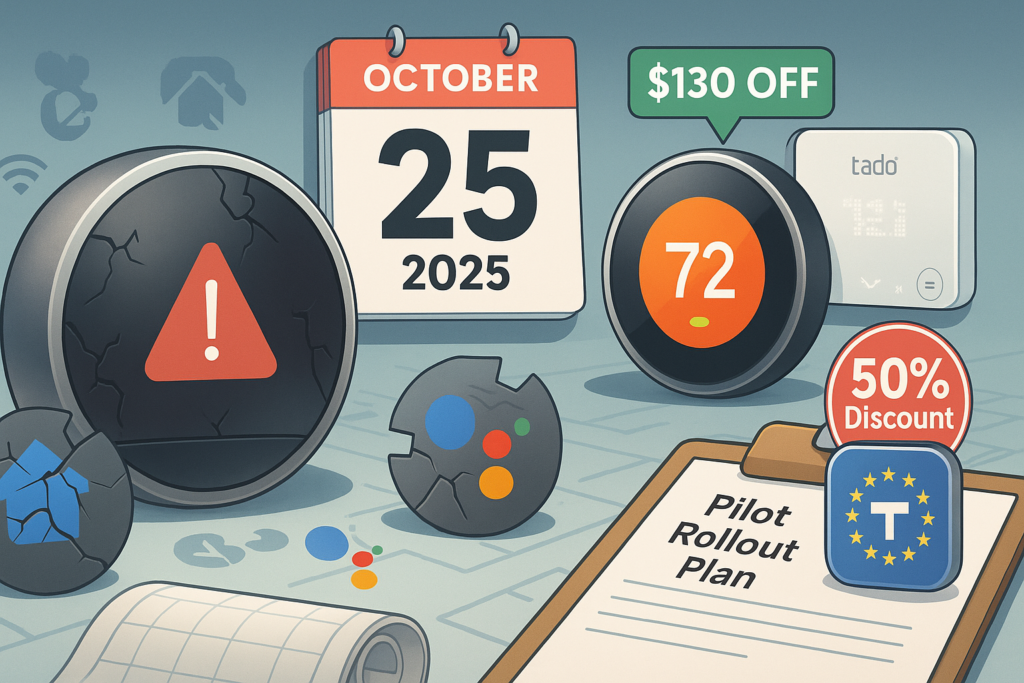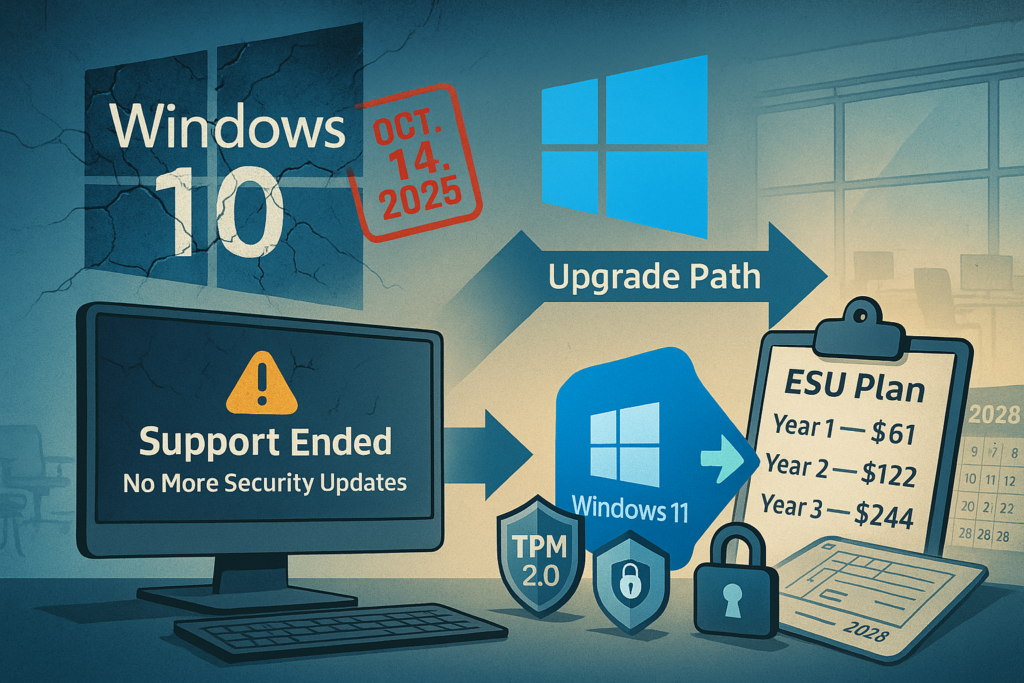In 2025, three cornerstone technologies that millions rely on will officially lose key support and functionality. Google is pulling the plug on first- and second-generation Nest Learning Thermostats on October 25, 2025, removing remote-control features and smart-home integration. Microsoft will end free security updates and patches for Windows 10 on October 14, 2025, leaving systems exposed unless organizations adopt Extended Security Updates or upgrade to Windows 11. And after 22 years, Skype will be retired on May 5, 2025, with users funneled into Microsoft Teams Free. As an IT consultant who’s navigated countless end-of-life migrations, I’ll share not only the facts but the lessons and best practices you need to stay ahead.
Google Nest Thermostats: From Smart to “Dumb” (October 25, 2025)
Google’s original Nest Learning Thermostats (1st gen 2011, 2nd gen 2012, and the 2014 European version) will no longer connect to the Google Home or Nest apps after October 25, 2025—effectively stripping away Home/Away Assist, remote scheduling, and voice control via Assistant. Locally, they’ll still adjust temperature and follow existing schedules, but the “smart” layer vanishes.

- Upgrade offers: U.S. users get $130 off the 4th-gen Nest; Canadians save CA$160; Europeans receive 50% off a Tado Smart Thermostat X.
- Expert tip: In my last enterprise smart-building rollout, we pre-notified stakeholders six months ahead, staged pilot replacements, and recycled legacy units in training labs. Start planning now—bulk-purchase discounts often appear for IT teams that engage early.
Windows 10: Security Sunset (October 14, 2025)
All editions of Windows 10, version 22H2, will stop receiving free security updates, bug fixes, and technical support on October 14, 2025. While machines will continue booting, unpatched vulnerabilities will accumulate, posing serious risks in regulated environments.

- Extended Security Updates (ESU): Microsoft’s paid ESU program runs through October 2028. Organizations can pay per-device fees (starting at US$61/year and doubling each year) to bridge migrations.
- Upgrade path: Windows 11 offers TPM 2.0–based security, virtualization-based protections, and modern auth by default. Use the Windows PC Health Check tool to inventory upgrade readiness now.
Anecdote: Last fall, I led a 300-seat upgrade from Windows 10 to 11 in a healthcare setting. By running pilot groups and leveraging Intune for phased deployments, we avoided last-minute scrambling when ESU pricing was announced.
Skype Retirement: Moving to Teams (May 5, 2025)
On May 5, 2025, Skype’s free and paid consumer services will be turned off. At its peak, Skype had 300 million monthly users; by 2025 that had dwindled to under 25 million. Microsoft will automatically prompt users to migrate chats and contacts to Microsoft Teams Free, which adds meeting scheduling, calendar integrations, and community features.

- Migration window: Data export remains available until January 2026; enterprise “Skype for Business” also directs clients to Teams in staged waves.
- Expert advice: I recommend running coexistence pilots—enable Teams alongside Skype for 4–6 weeks to let users adapt, then retire Skype. Include short “how-to” videos in your internal comms to ease the transition.
Action Plan & Best Practices
- Inventory & Audit:
- Catalog all Nest thermostat models, Windows 10 PCs, and Skype user accounts in your environment.
- Stakeholder Communication:
- Send targeted notices: homeowners, facility managers, end-users. Highlight deadlines and available discounts.
- Budget & Procurement:
- Factor upgrade costs (Nest replacements, Windows 11 licenses or ESUs, Teams training) into your 2025 IT budget cycle.
- Pilot & Phased Rollout:
- Start with non-critical sites; refine processes before enterprise-wide deployment.
- Training & Support:
- Develop quick-start guides for new thermostats, Windows 11 features, and Teams basics.
- Security & Compliance:
- Ensure all Windows 10 endpoints either migrate to Windows 11 or are covered by ESU to maintain compliance.
Final Thoughts
End-of-support events are more than deadlines—they’re opportunities to modernize infrastructure, boost security, and streamline user experiences. I’ve seen projects that treated EOL dates as afterthoughts spiral into crisis. By contrast, teams that plan early gain negotiating leverage on pricing, reduce operational risk, and win user goodwill.


